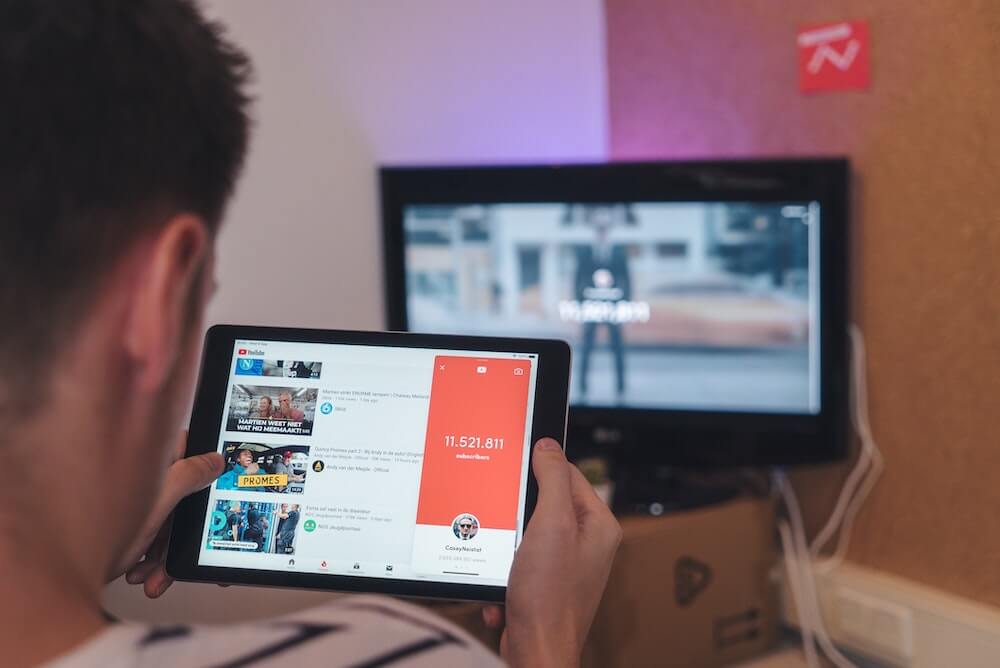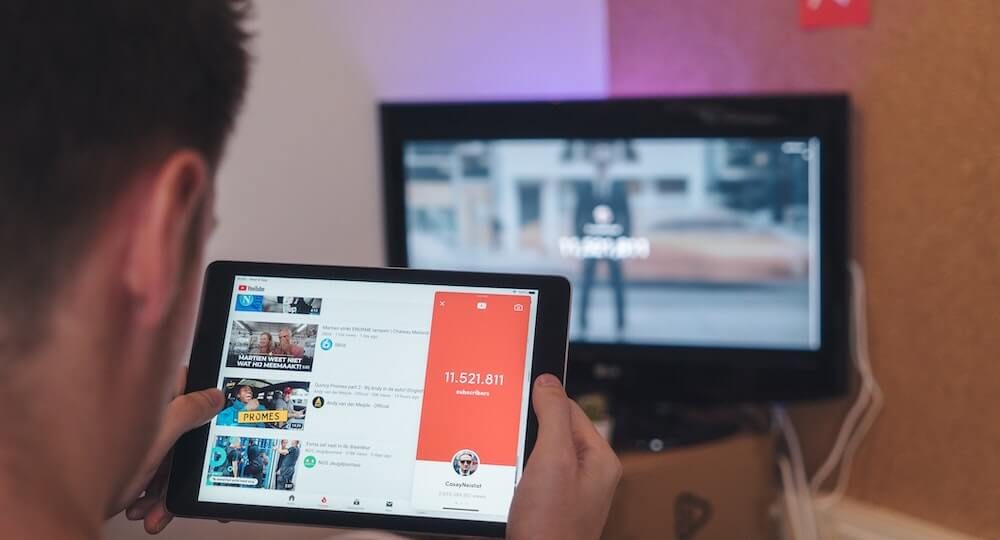The rise of YouTube has seen the platform become the official 2nd largest search engine in the world, behind Google with a total of 2+ billion users (as of the writing of this blog). Given YouTube’s magnitude of highly-engaged traffic spending an average of over 12 minutes per day on the site, businesses have a behemoth opportunity in video optimisation for YouTube’s search engine.
So we’ve compiled a complete guide to YouTube SEO to help you capitalise upon this highly-engaged audience.
In this guide we’ll show you everything you need to know on how to optimise your videos to rank well on YouTube. By the end of this guide you’ll know:
But before we delve into the SEO details, it’s vital we understand YouTube’s ecosystem.

How the YouTube Algorithm Works
Not all content is created equal in the eyes of YouTube’s algorithm, so it’s important we understand the algorithm’s priority in ranking search results.
YouTube has 4 key ranking factors; these include:
- Watch Time
- Audience Retention
- Audience Engagement
- Relevant Keywords
Defined by the total amount of time viewers spend watching your video since first posted. YouTube’s algorithm assigns authority and precedence to videos with high watch times, as this metric is weighed as high quality and relevant to audiences.
High watch time videos are seen as useful to YouTube given viewer retention leads to longer time spent on YouTube’s website. In consideration, YouTube’s algorithm has an incentive to promote your video to their audience (you’ll surface in search results).
Audience retention is the staying power of your video content – the amount of time your audience spends watching. If viewers watch to the end of your video, your content is weighed higher than if your audience exits early.
Audience retention is measured by percentage of video content viewed – and similar to watch time – YouTube will reward your video if viewers remain engaged, without leaving. This means it’s important you create engaging content that has viewership staying power from the beginning to end.
Example of YouTube’s Audience Retention Metric
You post a 10 minute video and the average number of users stop watching at 5 minutes – an audience retention rate of 50%. Compare the same video where viewers watch until the end (10 minutes), resulting in an audience retention score of 100%. The latter ranks more favourably with YouTube’s algorithm and will surface higher in search results.
Measures how well the audience interacts and engages with your video. This includes: likes, comments, channel subscribers and shares.
The audience engagement metric informs YouTube’s algorithm the total number of viewers who found the video content relevant and were motivated to spend time engaging with the channel.
A metric that measures how video titles, descriptions and tags are optimised around relevant keywords. The choice of relevant keywords in titles, descriptions and tags provide YouTube’s algorithm with information and context about your video and allows it to be ranked for these relevant search terms.

How to Conduct Keyword Research for YouTube
Now you know how Google ranks your content, it’s time to optimise your YouTube channel and video content for maximum impact and search results rankings.
For your video content to surface in the top search results, it’s essential you research the topics and related keywords users are searching to find relevant content.
There are 3 ways to conduct this keyword research:
- YouTube’s autocomplete function
- Free online tools
- Competitor analysis
Read on to learn how each option helps gather valuable keyword intelligence.
YouTube’s Autocomplete Function
Go to the YouTube search bar and type in your keyword. Like Google, YouTube’s search engine will suggest the most popular search queries relating to your keyword.
Example:
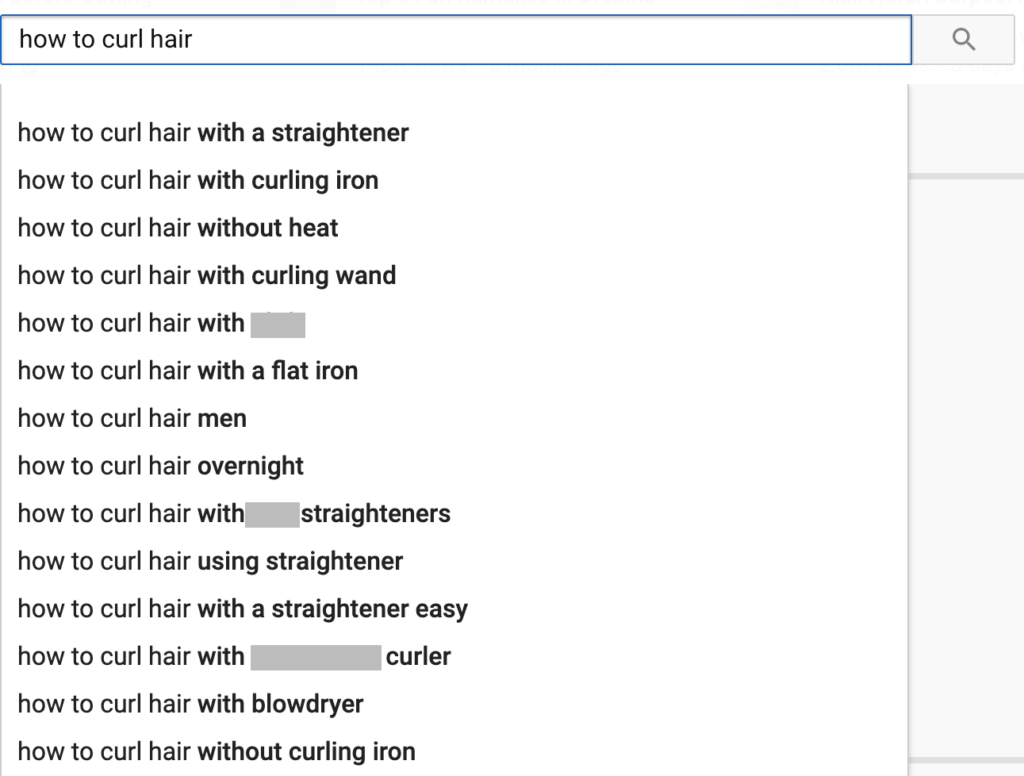
Creating videos using the above keywords in the title and content will attract viewers as these are popular search terms.
Free Online Tools
Tools such as tagsYouTube.com or Keyword Tool are websites that offer the relevant keywords from user search. These tools help you gain insight into the exact terms, phrases and keywords users are using to find content that’s relevant to their needs.
Competitor Analysis
See what’s working (with your competitors) because success leaves clues, and successful competitors are worthy of noting. Subscribe to your competitors’ YouTube channels to see videos with the most views, keyword titles for most viewed videos, and content with the highest engagement (comments and/or likes).
Once you’re equipped with knowledge on your audiences’ most searched keywords, it’s time to start creating your optimised content.

How to Optimise your YouTube Videos
Include Keywords in your Video Title
Similar to a blog title, your video title should inform your audience the content of your video in an attention-grabbing and engaging way. The ultimate goal? To encourage users to click on your video.
Relevant keywords used in your title help YouTube’s algorithm understand your video content and rank it for relevant search terms for your intended audience.
When writing your title, try to use your target keywords at the beginning for maximum benefit (but don’t force it if it doesn’t look right). When creating your video title, you have a maximum of 100 characters to use. Best practice recommends 70.
The below example illustrates the benefit of using popular search terms in your video title, such as ‘how to curl hair with a curling wand’. This high volume keyword was used in the title to give a clear idea to YouTube’s algorithm the nature of video content.
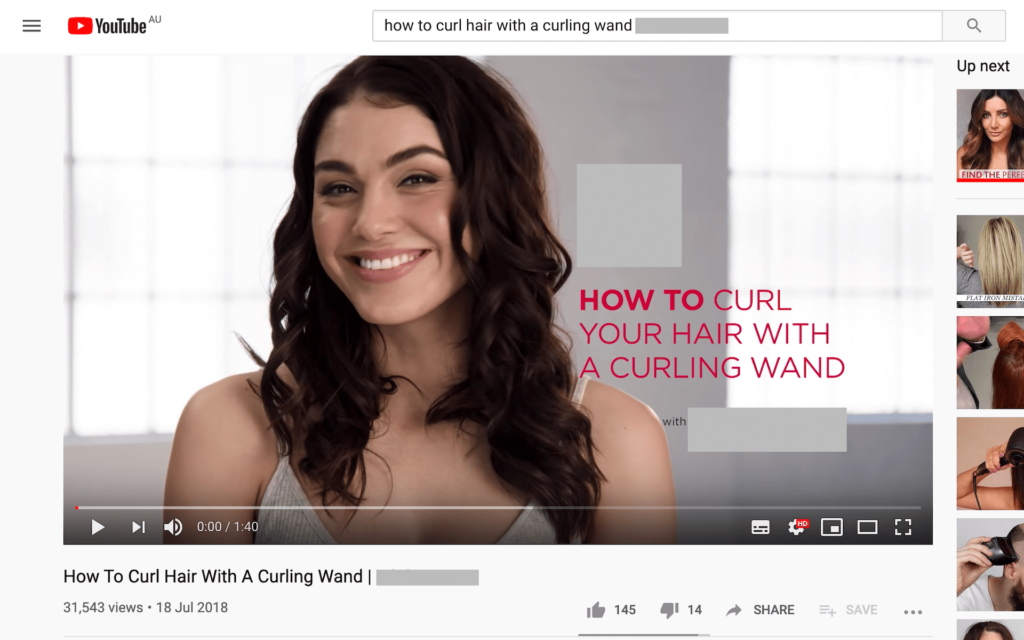
Utilise YouTube’s Video Description Feature
Your video description provides YouTube’s algorithm context around your content. It’s also an opportunity to add search terms relevant to your video. For higher relevance and engagement, aim for 200-300 words that describe the value your content provides your audience.
Within your video description it’s optimal to provide links to any products or relevant pages on your website addressed in your video. By doing so, you encourage action from your viewers who wish to learn more or purchase from your website.
It’s also recommended to add links to specific blog posts relevant to your topic, as well as social media accounts so your viewers can engage with your brand.
The most important call to action in your video description: subscribe and a reminder to leave a comment to increase your channel engagement.
Example:
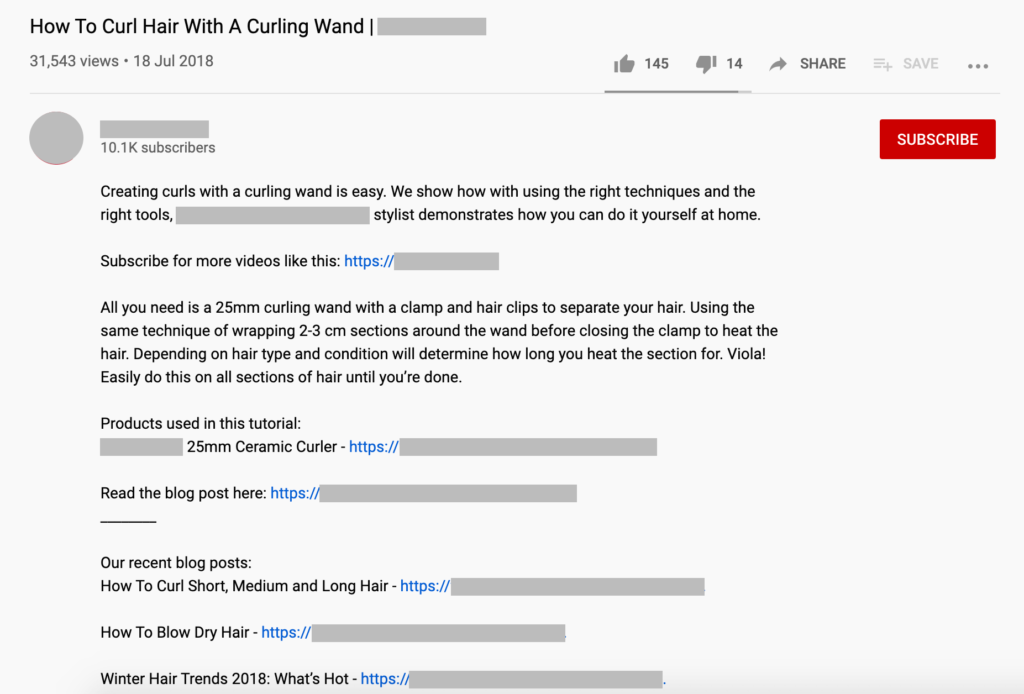

Add Relevant Video Tags
Using tags to describe your video helps YouTube’s algorithm optimise your search ranking. You can use a maximum of 15 tags per video description.
We recommend using 5-10 tags, as the use of irrelevant or misleading tags, or the practice of keyword stuffing can lead to penalties, including devaluing of your videos in search rankings or if severe, termination of your YouTube account. When writing your tags, be sure to use your most relevant keywords in the beginning of your tag description.
Example of tags for our ‘How To Curl Hair With A Curling Wand’ tutorial:
To find keywords your video or a competitor’s video is using, simply use this free online tool. Insert your YouTube URL and all the tags will show up.
Optimise your Thumbnail
A thumbnail is the image your viewers see as they scroll through their search results. A picture tells a thousand words, so this choice of image is vital and impacts your click through rate (CTR).
High quality images with great lighting that communicate a clear link between the visual and your video title increase your CTR and views. Always aim for consistency between your image and your video title. Your chosen image should support the title.
Custom or Default Thumbnail?
It often improves performance to use a well designed or carefully chosen custom thumbnail vs the auto-generated one from YouTube, so this is the recommended approach here.
Thumbnail Design Tips
- Mobile First
- Less is More
- Image Left, Text Right
- Use Negative and White Space
- Know Your Numbers
- At the time of writing, the optimal YouTube thumbnail size is 1280 pixels by 720 pixels.
- Maintain a thumbnail dimension aspect ratio of 16:9.
- Minimum thumbnail size: 640 pixels wide.
- Keep your thumbnail images under 2MB.
- Image formats: JPG, GIF, or PNG.
- Stay on Brand
Over 60% of content is consumed on mobile devices. Think big to view (on) small. Make sure your thumbnail image is clear and image fonts large so they are easily readable on a mobile device.
Keep the text concise and clear. Learn to say more with less because you don’t have much room on your image.
Studies show we view websites from left to right so it’s a best practice in design to place your visual left and your text on the right.
In design with limited space, less is more. Use negative and white space design principles to turn down the noise in your thumbnails i.e. avoid the design clutter. It’s clean, sleek and exudes professionalism.
Maintain the same fonts and colours your brand represents. If space permits, consider adding your logo. If you do, ensure you maintain consistency on all thumbnails and place your logo in the same place at all times.

How to Optimise your YouTube Channel Homepage
Further from optimising your YouTube videos, you should also optimise your YouTube channel homepage for maximum effectiveness.
Follow these tips to make your channel homepage compelling:
- Include a profile picture and branded banner relevant to your channel. This will give viewers a feel for the type of content they can expect on your channel – but remember – try to stay on brand by conforming to your Brand ID Kit for visual consistency.
- On your YouTube homepage channel you can select a channel trailer that plays automatically when a viewer visits your homepage. Try to choose a video that best summarises your channel and brand, but is engaging at the same time.
- It’s also optimal to create a playlist on your home channel to make it easy for your viewers to watch your most popular videos. Categorise your playlist into relevant topics, as these help organise your content and can help increase watch time.
If you want to improve your YouTube presence and increase the ROI from your marketing budgets, we can help you with Search Engine Optimisation (SEO) services. Get in touch for a free proposal today.
Stay on top of the latest digital marketing news and trends by following us on LinkedIn, Facebook, YouTube or Twitter.
